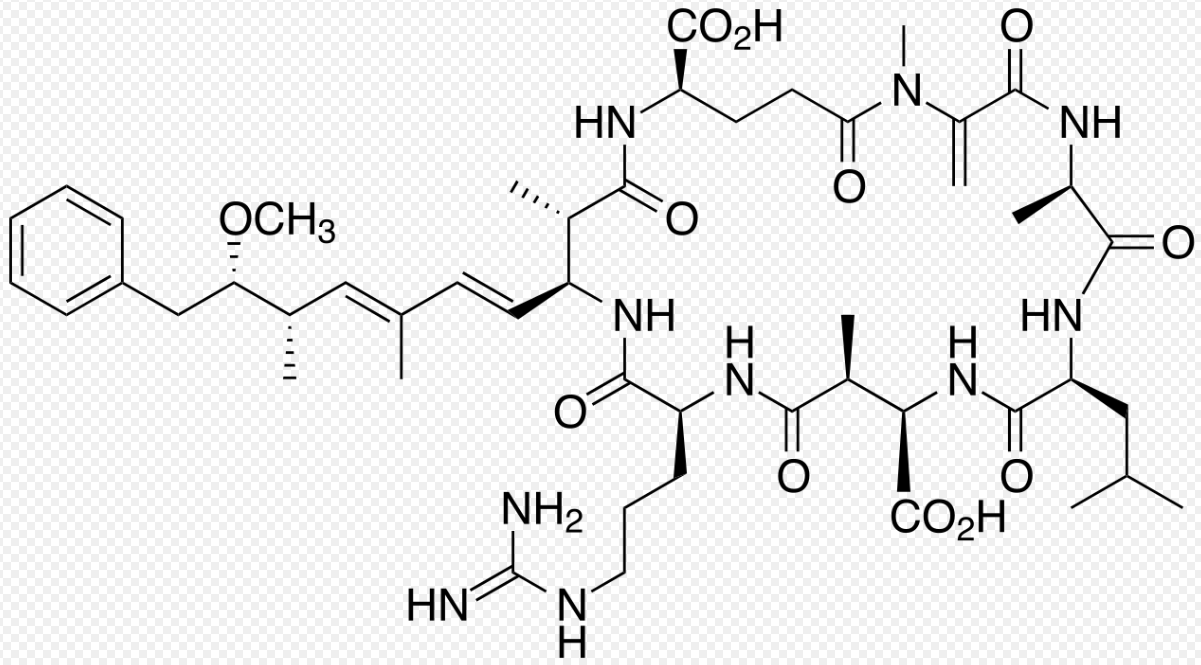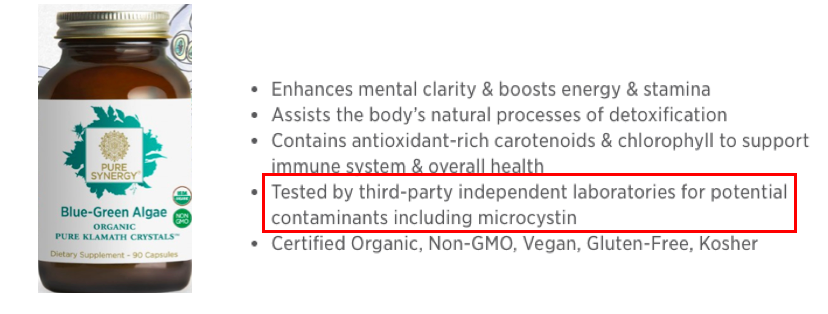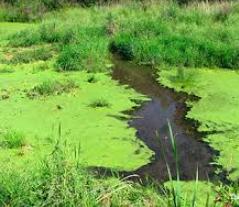An article in today's New York Times discusses strange algae blooms in ponds in three New York City parks. But it's not just New York. Blue-green algae blooms, also called pond scum, have also been found in waterways in New Jersey, North Carolina, lakes in the Pacific Northwest and the entire coast of Mississippi.
The blooms are serious enough that in 2016 the CDC (1) published a 50-page report called "Harmful Cyanobacteria and Algae Blooms: Human Dimensions."

Normally, the algae are not harmful (2); it is used worldwide as a dietary supplement. Of the 1,500 known species, one called Spirulina is especially popular, due in no small part to an article in the 1981 National Enquirer, a scientifically impeccable source if ever there were any, entitled "Doctors Praise Safe Diet Pill." Whether it is useful or not, people sure buy a lot of it; a search of "spirulina" on Amazon resulted in more than 2,400 hits.
Blue-green algae, aka cyanobacteria, do not routinely form toxic substances. But under certain conditions – warm brackish water containing elevated levels of phosphorous and nitrogen – they act up and produce an array of toxic chemicals called cyanotoxins. One particularly dangerous class of cyanotoxins are the microcystins; there are more than 50 members of this class and these bad boys are mighty toxic to the liver. The LD50 in mice (2) is approximately 0.075 mg per kilogram body weight of the mouse. To put this in perspective, here are a few known toxins along with with their mouse LD50 values in milligrams per kilogram of weight (mpk):
- Sodium cyanide ~5.0 mpk (67-times less toxic than microcystins )
- Nicotine 24 mpk (321-times)
- Strychnine (rat poison) 2.0 mpk (27-times)
- DDT 150-300 mpk (2,000-4,000-times)
Source: TOXNET

The chemical structure of microcystin LR. Or, cyclo(2,3-didehydro-n-methylalanyl-D-alanyl-l-leucyl-erythro-3-methyl-D-beta-aspartyl-l-arginyl-(2S,3S,4E,6E,8S,9S)-4,5,6,7-tetradehydro-9-methoxy-2,6,8-trimethyl-10-phenyl-3-aminodecanoyl-d-gamma-glutamyl), if you prefer.
Since the global algae sales were $3.4 billion in 2017 and people are not dropping dead left and right from the stuff it's obvious that there is not a sufficient quantity of microcystins in the bottle to harm you, at least not very often. Which is why you see labels like this:

So, those independent labs must be pretty good, right? Otherwise, there would be bottles of the stuff that contained one or more of the microcystins.
Like this:

Source: Toxins (Basel). 2017 Mar; 9(3): 76. Published online 2017 Feb 25. doi: 10.3390/toxins9030076
A group from the University of Montreal took a look at how often algae supplements contain microcystins, and if present, in what quantity.
"[Algae supplements] products generally contain non-toxic cyanobacteria, but the methods of cultivation in natural waters without appropriate quality controls allow contamination by toxin producer species present in the natural environment."
The group used some pretty nifty detection methods involving derivatization (reacting the toxins with another chemical which helps isolate, identify, and quantitate what's in there) and sophisticated analytical instruments to test 18 commercially products containing spirulina or Aphanizomenon flos-aquae, another common cyanobacterium. Of the 18 samples, 8 contained levels of microcystins that "contained some cyanotoxins at levels exceeding the tolerable daily intake values."
The stuff must be pretty good if people are willing to take their chances with a chemical that is 67-times more toxic than sodium cyanide.
Or not. The Natural Medicines Comprehensive Database, which is maintained by the National Center for Complementary and Integrative Health (NCCIH, part of the NIH), rates Natural Medicines effectiveness based on scientific evidence according to the following scale: Effective, Likely Effective, Possibly Effective, Possibly Ineffective, Likely Ineffective, Ineffective, and Insufficient Evidence to Rate.
According to NCCIH blue-green algae is "possibly effective" for exactly one condition – high blood pressure, while there is "insufficient evidence to rate effectiveness for" 26 other diseases and conditions, including HIV/AIDS, ADHD, obesity, and diabetes.
Let's rein it in a bit and look at real life. Clearly, if there are human deaths from contaminated blue-green algae they are extremely rare. Humans who are exposed to the toxins usually suffer from gastroenteritis, allergic reactions, and sometimes transient liver inflammation. Cyanobacteria are known to be more toxic to dogs than humans. So, what are the risks and benefits of the supplement:
Risks:
- There are obviously bottles of the supplement that contain elevated, perhaps unsafe, quantities of microcystins.
- Since supplements need not be approved by the FDA it is common to find bottles that contain adulterants (usually prescription drugs and unapproved stimulants) and also unknown contaminants. See my recent op-ed (with Dr. Henry Miller) in Issues and Insights. Will Dangerous Dietary Supplements Finally Be Reined In?
- Aren't you a little skeeved out at the idea that that there is probably one or more toxins in the supplement that are thousands of times more toxic than DDT?
Benefits:
- Unknown
In this regards, blue-green algae should be seen as what it is – just another supplement; it probably won't help you, and it probably won't harm you, unless there is something else in the bottle – a rather common event.
Perhaps I'm odd, but this doesn't really add up. But it's your call. If it makes you feel better, go right ahead. Just don't feed it to the dog.
NOTES:
(1) I have repeatedly criticized the CDC (and rightfully so) for its unsavory role in turning an "opioid problem" into an "opioid catastrophe," but when it comes to tracking down and figuring out poisonings or pinpointing where an epidemic began, the agency is usually top-notch.
(2) The LD50 is the amount of a single dose of a chemical that will kill lab animals, usually rodents. The higher the number, the safer the chemical.




